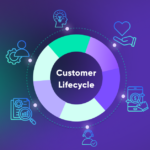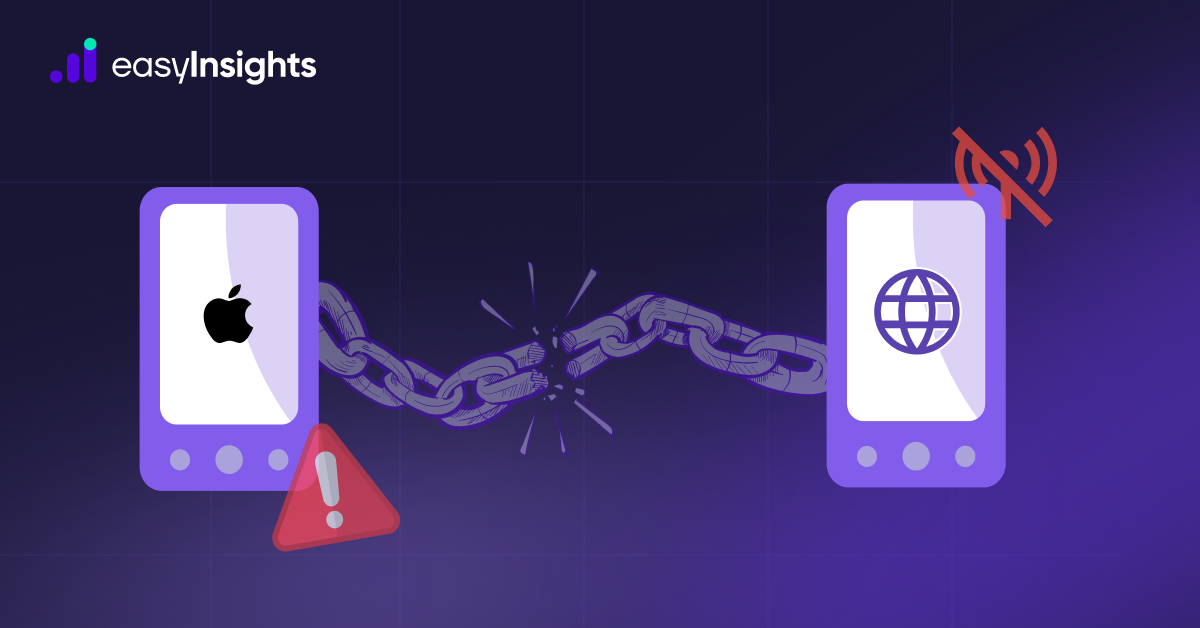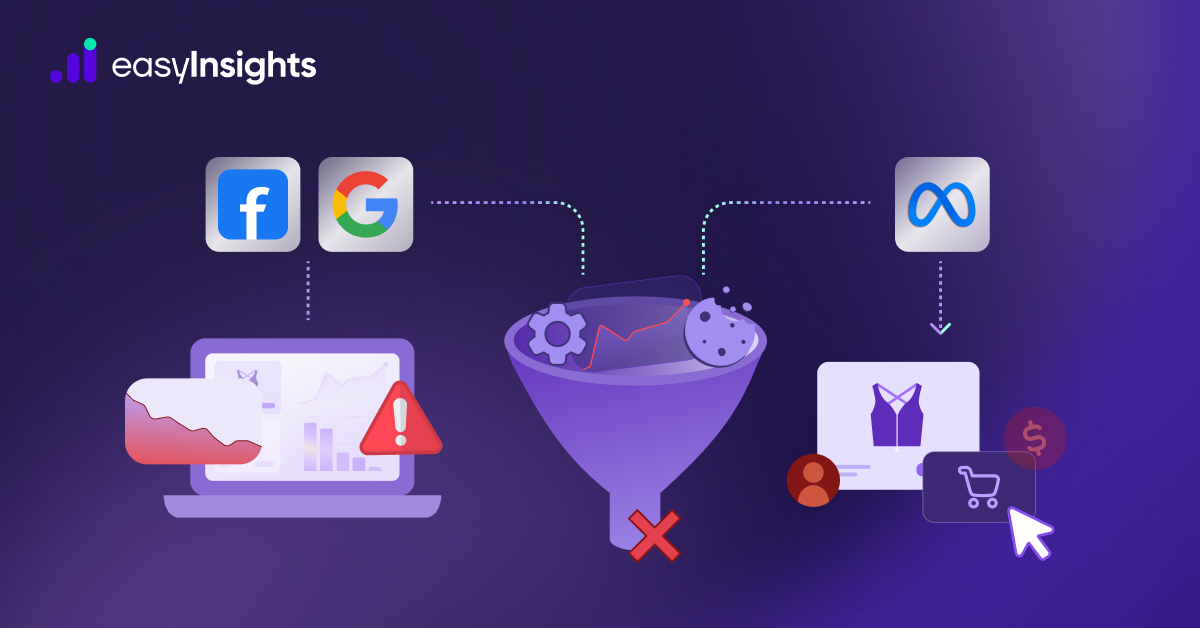
In the era of privacy-first marketing, Apple’s SKAdNetwork (SKAN) has completely reshaped mobile attribution.
Since its debut in 2018, SKAN has evolved from basic install reporting to a sophisticated, multi-postback framework that helps advertisers measure performance – all without compromising user privacy.
In this post, we’ll walk through how SKAN evolved from version 1 to 4, explain key concepts like postbacks and conversion values, and look ahead at what’s next with AdAttributionKit.
Jump ahead to:
What Is SKAdNetwork?
SKAdNetwork (SKAN) is Apple’s privacy-preserving system for tracking app installs and in-app engagement – without using device identifiers like the IDFA.
Instead of tracking users individually, SKAN works with aggregated signals. When a user installs an app after viewing or clicking an ad, Apple sends a postback (an anonymized report) to the ad network.
Why Apple Introduced SKAdNetwork
Apple introduced SKAdNetwork as part of its broader privacy protection strategy.
Before SKAN, most mobile attribution relied on tracking individual users through identifiers like the IDFA (Identifier for Advertisers). This meant ad networks could see exactly which users installed an app, what they did afterward, and even combine that data with other tracking systems.
As privacy concerns and regulations like the GDPR and CCPA grew, Apple made a clear move toward user data minimization.
By launching SKAdNetwork, Apple aimed to:
- Protect user identity while still allowing advertisers to measure performance
- Eliminate device-level tracking without breaking the mobile ad ecosystem
- Encourage privacy-centric innovation from ad networks and analytics partners
In short, SKAN is Apple’s solution to balancing advertiser needs with user trust – a middle ground between total anonymity and meaningful performance insights.
What Is a Postback?
A postback is Apple’s way of telling ad networks that an install has occurred – while keeping the user’s identity private.
Each postback contains:
– The campaign or ad network ID
– A conversion value (representing what the user did in-app)
– An approximate timestamp window
In SKAN 1–3, Apple sent only one postback per install.
With SKAN 4, Apple introduced up to three postbacks, sent at different time windows (day 0-2, 3-7, and 8-35). This helps advertisers track short-term and long-term user engagement without violating privacy.
What Is a Conversion Value?
A conversion value is a small number – between 0 and 63 that represents a user’s post-install activity.
Apple gives developers 6 bits of data (64 possible values).
You can assign each value to key events in your app, such as:
– 0 = Opened the app
– 10 = Completed tutorial
– 40 = Made a purchase
Since Apple limits how long conversion values can be updated (usually within the first day or so), you must design your conversion schema strategically to capture your most valuable user actions early.
In SKAN 4, Apple introduced an extra layer:
– Fine-grained values (0–63) when enough data is available
– Coarse-grained values (Low / Medium / High) when there isn’t enough traffic for detailed reporting
SKAN 1: The Beginning of Privacy-First Attribution
Launched in 2018, SKAN 1 was Apple’s first step toward privacy-safe attribution.
It provided:
- One postback per install
- Minimal campaign data
- No post-install insights
Advertisers could see which campaign drove an install, but not what happened afterward.
Key takeaway: SKAN 1 prioritized privacy but offered almost no measurement depth.
SKAN 2: The Start of Post-Install Insights
With iOS 14 and the App Tracking Transparency (ATT) framework, Apple made SKAdNetwork critical for campaigns that couldn’t use IDFA tracking.
SKAN 2 improvements:
- Added version tracking for postbacks
- Introduced source app ID and fidelity type
- Enabled conversion values (0–63) for post-install activity
Still, advertisers only received one postback per install, limiting the scope of engagement measurement.
Key takeaway: SKAN 2 was smarter, but still confined to a single postback and a single conversion value.
SKAN 3: More Stability and Refinement
SKAN 3 refined the model rather than reinventing it.
It kept:
- One postback
- 6-bit conversion value
- Stronger privacy thresholds
Apps could now use conversion values more reliably, but attribution windows remained short.
Key takeaway: SKAN 3 improved stability and accuracy, yet measurement was still limited and time-sensitive.
SKAN 4: A Major Leap Forward
Released with iOS 16.1 (2022), SKAN 4 made major improvements to measurement flexibility and campaign granularity.
What’s New in SKAN 4
- Three Postbacks → Measure user behavior across time
- Postback 1: 0-2 days
- Postback 2: 3-7 days
- Postback 3: 8-35 days
- Fine- and Coarse-Grained Conversion Values → Get either detailed (0-63) or simplified (Low/Medium/High) data
- Expanded Source Identifiers → From 2-digit (0-99) to 4-digit (0-9999) campaign codes for deeper breakdowns
- LockWindow Feature → End the measurement window early if the key event already occurred
- Crowd Anonymity Tiers → Larger audiences unlock richer data; small ones receive coarse metrics
Key takeaway: SKAN 4 finally gives marketers flexibility – multiple postbacks, richer IDs, and scalable privacy.
Beyond SKAN 4: Introducing AdAttributionKit (AAK)
At WWDC 2024, Apple announced AdAttributionKit (AAK) – the next generation of SKAdNetwork.
AAK builds on SKAN’s foundation but adds:
- Re-engagement tracking
- Support for alternative app stores
- Simplified multi-platform measurement
As of 2025, SKAN 4 remains the industry standard, but AAK points to the future of privacy-friendly attribution.
SKAN Evolution Summary
| Version | Postbacks | Conversion Values | Key Features |
| SKAN 1 | 1 | Minimal | Basic install attribution |
| SKAN 2 | 1 | Fine (0–63) | Source app ID, fidelity type |
| SKAN 3 | 1 | Fine (0–63) | More stability & privacy |
| SKAN 4 | Up to 3 | Fine (0–63) + Coarse (L/M/H) | Multi-window postbacks, LockWindow, expanded IDs |
| AAK (Next) | TBD | TBD | Re-engagement, multi-store support |
What Marketers and Developers Should Do Now
- Upgrade to SKAN 4 if your users are on iOS 16+
- Design your conversion schema strategically – you only get 64 fine-grained options
- Optimize for scale – more installs unlock finer insights
- Leverage all three postbacks to understand short- and long-term engagement
- Stay updated on AdAttributionKit – it’s the next big shift
Final Thoughts
From SKAN 1’s single postback and minimal insight to SKAN 4’s multi-window measurement, Apple’s SKAdNetwork has matured into a powerful, privacy-compliant measurement framework.
The lesson for mobile marketers is simple:
– Understand postbacks.
– Use conversion values wisely.
– Embrace aggregate data over user-level tracking.
In Apple’s privacy-first world, success belongs to marketers who measure responsibly, and SKAdNetwork is the roadmap to get there.
To learn more Book a demo now








